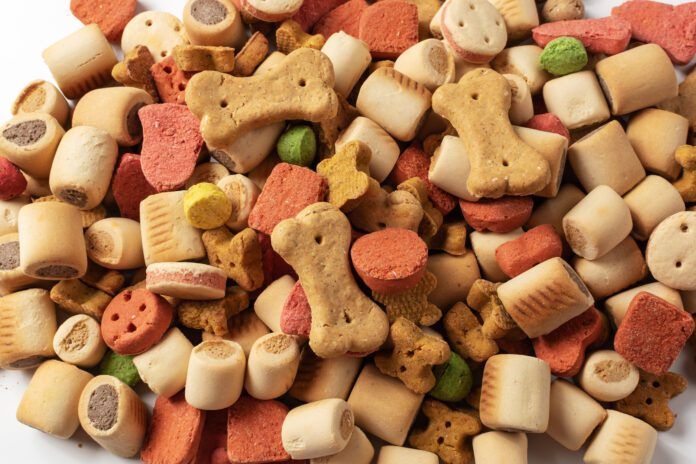When it comes to dog training, treats are often a key component. Also, our pets like them! However, it’s important to not overfeed our dogs or fill them up on food that may not be as healthy or nutritionally balanced as their regular diet.
So how many treats can a dog really have per day?
“There is no set number of how many treats a dog can have per day,” says canine nutritionist Diana Laverdure-Dunetz. “Whenever we think of food intake, including treats, we need to think in terms of how many calories the food contributes to the overall diet, not the quantity of food. This means, of course, that you can give a greater number of lower-calorie treats than higher-calorie treats.”
10 Percent Rule for Dog Treats
There’s a general rule that treats should take up only 10 percent of a dog’s daily nutritional intake. But what exactly does that mean?
“According to the ’10 percent rule,’ if your dog consumes 600 calories per day, then not more than 60 of those calories should come from treats,” says Laverdure-Dunetz. “However, pet treats are not required to list the calorie content on the label, so figuring this out can be difficult or impossible. This is why it’s important to be a savvy consumer and closely analyze the product’s ingredients list.”
She says that treats containing high amounts of meat, oil, or sugar, for example, will generally contain more calories than treats containing whole grains, legumes, and non-starchy vegetables. Also, treats that contain more fiber will likely contain fewer calories.
Picking Low-Calorie Dog Treats
When thinking about how many training treats a puppy, small dog, or senior should have per day, it’s still about the calories.
“For example,” says Laverdure-Dunetz, “senior dogs tend to be less active and so should consume fewer calories. This means cutting back on treats and offering lower-calorie treats.”
But, she adds, even active dogs should not consume too many treats because a healthy diet should consist mainly of properly balanced, nutrient-dense foods.
“Remember, treats are called treats for a reason,” she says. “They should be a special offering, not a mainstay of the diet.”
As noted above, the type of treat makes a difference. How many of a specific type of treat a dog should have will depend on the number of calories the treat contributes to the overall diet as well as its nutritional quality.
“Just like with human foods, there are smart treat choices and poor treat choices,” says Laverdure-Dunetz.
For example, avoid treats that are high in calories and low in nutritional quality—like those containing refined oils, flours, and sugar. On the other hand, many companies now offer high-quality treats containing ingredients intended to enhance a dog’s overall wellness or target specific health concerns.
“I always recommend treats that support an already healthy diet, rather than detracting from it,” says Laverdure-Dunetz. “This means choosing treats that contain functional food or superfood ingredients, such as berries, seeds, green foods, and certain herbs.”
She also says to find organic treats whenever possible, since non-organic treats can expose dogs to unwanted pesticides, herbicides, hormones, antibiotics, genetically modified organisms, and other undesirable ingredients.
Fresh, whole food treats are also a great option.
“This might mean slices of carrot, apple or pear, green beans or sweet bell peppers,” says Laverdure-Dunetz. “This is a great way to sneak extra nutrition into your dog’s diet, while still making the treat a special part of his day.”
Treats that Keep Dogs Healthy and Happy
Balancing fun treats with health is a big part of dog ownership. By paying attention to labels when buying commercial treats, using healthy foods like carrot slices, green beans, sweet bell pepper, and cucumbers, or even making your own dog treats, you can keep rewards high, calories low, and dogs happy.







Does Whole Dog Journal recommend any particular Dog treats?